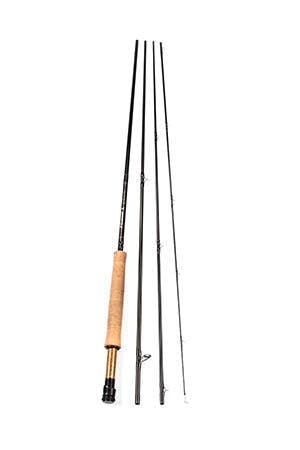FLY FISHING GEAR | 10 RODS FOR RIVER TROUT
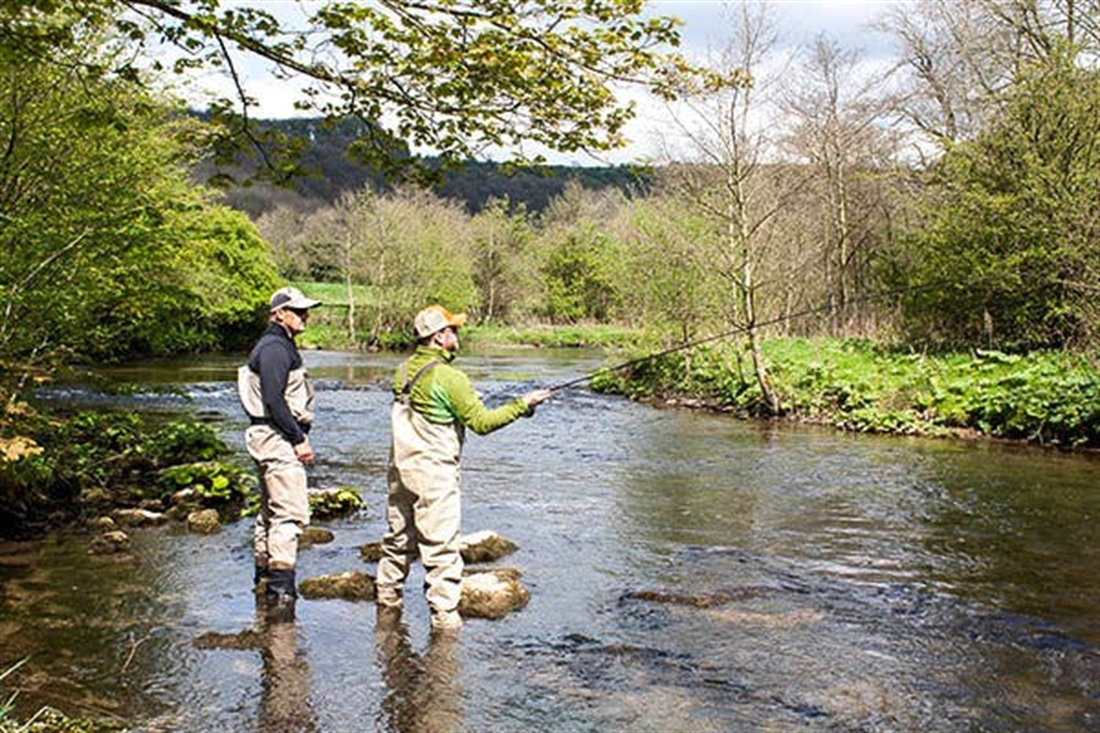
Rightly or wrongly, the 9 ft five-weight rod remains the most popular length and line rating for UK river trout. With the advent of weight-forward lines and the advances in carbon-fibre technology a modern five-weight is generally quite a powerful rod best suited to larger rivers like the Tweed or Annan, particularly when faced with stronger winds, or those chalkstreams stocked with larger-than-average trout.
In this test, the characteristics we were looking for were: easy casting, feel, accuracy, ability to control loop shape and reserve power (important when looking to cast further/into a wind or fighting a big fish). We used the Guideline Fario LW reel loaded with an InTouch Rio Gold WF5F line – a powerful taper capable of turning over longer leaders – and the Wychwood Truefly SLA MkII reel loaded with the new two-tone Royal Wulff Triangle Taper WF5F line – a more delicate, gradual front taper for lighter presentations with shorter leader lengths of around 9 ft.
The test took place on the Derbyshire Wye in bright, dry conditions with a downstream wind that varied in strength throughout the day.
Shakespeare Agility II
While it lacks some of the smoothness of the more expensive rods it is still a good blank that casts a good distance. It roll-casts well, is forgiving and the tip tracks with reasonable accuracy, though there is some tip bounce and less feel compared to the higher-end rods.
It has a faster action and more power than the Wychwood. It worked well with both lines and is very good value for money, ideal for beginners. The super-slim cork grip won’t suit all hand sizes.
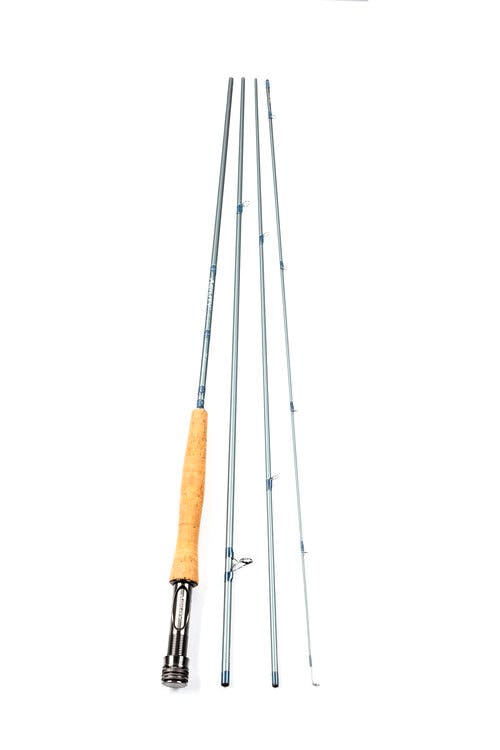
Wychwood Drift
An interesting rod with a stealthy finish, ideal for the dedicated river angler on a relatively tight budget.
The blank has a fairly fast action but is still forgiving and quite easy to cast. You can put out a decent line with either a slow or fast stroke making it versatile and likely to suit most anglers casting styles. The chief improvement on the lower-priced Shakespeare is reduced vibration in the blank. It is quite a powerful rod though it worked slightly better with the Triangle Taper than the Rio Gold. The composite handle performs just as well as full cork.
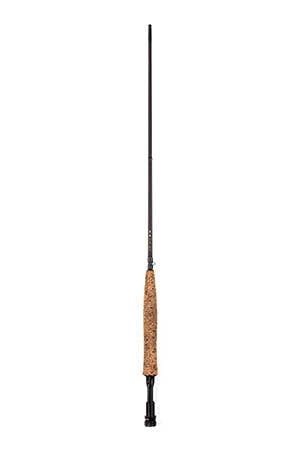
Redington Vice
This is a powerful, stiff, ultra-fast action rod that is great for long casts and larger flies. Despite the stiffness there is still a good amount of feel in the handle. For casting into the wind and forming extremely tight loops it would be excellent, and there is lots of power in the butt for fighting bigger fish. Arguably little different to a six-weight, you could call it a five-weight plus and certainly not a light river rod; it might suit stillwater situations very well.
James really liked it but Don rightly pointed out that you would need to be careful on the strike when using light tippets. This rod would not suit the beginner and is really for those who prefer to use a powerful, fast casting stroke.
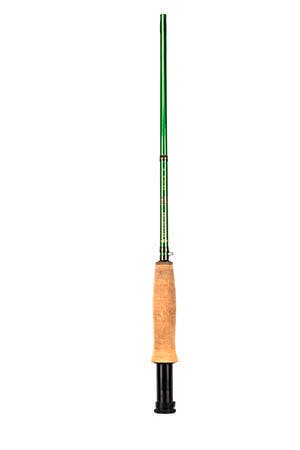
Vision Onki
The Onki feels much softer-actioned than the Redington yet it will still form neatrrow loops. A little smoother than the Wychwood, it feels light in the hand. There is a fraction more tip bounce than the Redington but this doesn’t affect performance. It is very accurate, bends beautifully with plenty of feel and still has power in reserve – it had no problems casting into the wind.
Timing was less critical with this rod due to its forgiving action, which helps casting to become intuitive. You can really feel the rod working as a spring and the line flies forward off the tip like water off a paintbrush. It would suit the beginner, and allow them to grow while having plenty for the intermediate and advanced angler to enjoy.
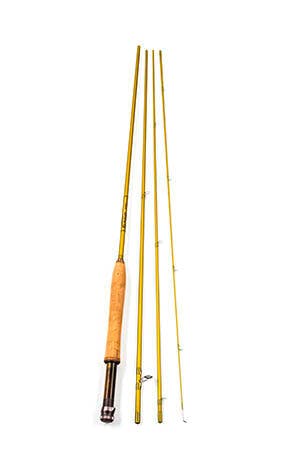
Greys GR70 Streamflex
Another powerful rod, though smoother loading than the Redington and not quite so stiff or tip-actioned and therefore its more forgiving. The tip tracks truly with very little bounce. There is a bit less feel and accuracy than with the Vision Onki and it is marginally harder to control. The Streamflex picks line off the water well and the forward delivery feels very positive. It roll-casts well, too, and would be a very nice rod with which to cast and fish.
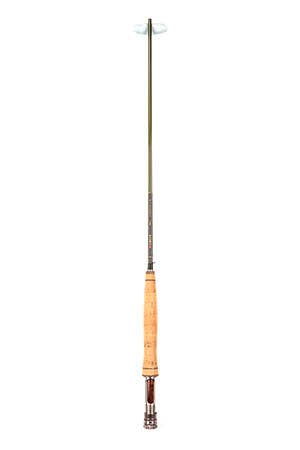
Airflo Airlite V2
Another rod that suits a faster casting stroke and responds best to an assertive stop on the forward delivery. It performed well enough, but both James and Don felt it was hard to get the best out of it – the rod spring wasn’t as smooth as the Visions and it seemed to transmit less energy to the cast. There wasn’t much feedback or feel in the handle, which makes it best suited to more advanced casters who have already mastered timing.
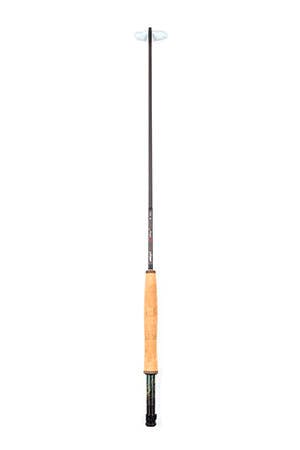
Guideline LPXe
The new LPXe felt powerful from the off. It has a fast tip action, though it is not as stiff as the Redington. There is plenty of reserve power in the blank, which makes generating high line speed an effortless affair. It is especially effective casting into the wind. It was very accurate with both lines in the test, though it prefers a slightly slower stroke with the Triangle Taper. It was hard to separate the Guideline, Orvis, Scott and Loop but the LPXe feels lighter in the hand than the Orvis and is more forgiving than the Scott. It would be an excellent rod for the intermediate caster who wants to improve their skills, and yet it is a rod you would not outgrow. Advanced casters will really enjoy it, too.
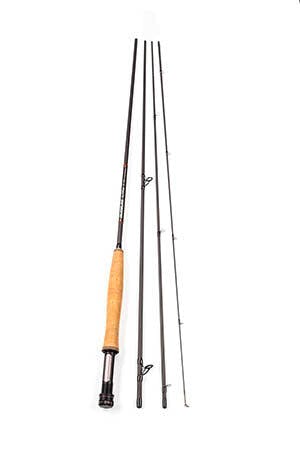
Orvis Recon
The Recon is a very nice rod. It has a middle-to-tip action and performs similarly to the Vision but has a slightly faster action. It was at its best with a quicker casting stroke, but would suit most abilities. It loads easily, if slightly better with the Rio Gold than the Triangle Taper. It was responsive even with short casts and was very forgiving of poor timing. Controlling the size of the loops was no problem and neither was distance. It was effortlessly powerful and accurate, intuitive to cast and makes you feel connected throughout the stroke.
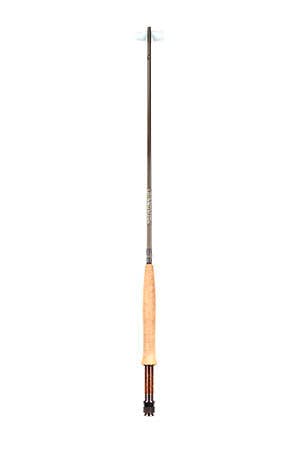
Hardy Demon Smuggler
The Demon Smuggler is a six-piece travel rod, but you can’t tell that when casting it. The rod performs very well and has a full flex, almost down to the handle. Presentation is very good with a slower stroke, casting open loops and making parachute casts, yet it also responds well to a positive stop – forming tight loops and generating good line speed. It has a good amount of reserve power, though it was neither as effective into the wind as the Orvis and Vision nor quite as sharp or accurate as the Scott and Orvis. It lifts line beautifully, though it may have a little too much flex for those who prefer a crisper action.
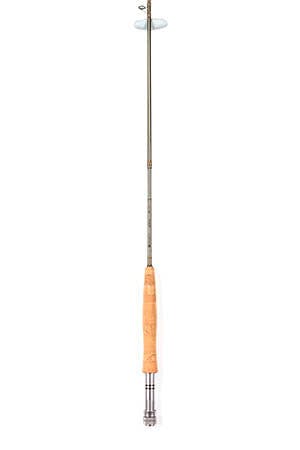
Sage X
In terms of pure performance the Sage X was the best rod in the test. It feels light in the hand, is powerful without being stiff and produces tremendous line speed with little effort. It will form tight or open loops at will, it is very easy to control and performs well with both lines – preferring the Triangle Taper at close range. The X has the least tip bounce of all the rods tested; recovery and tracking are excellent. It is extremely accurate, allowing you to put your fly precisely where you want it cast after cast. It felt fractionally better than the Guideline but costs much more.
